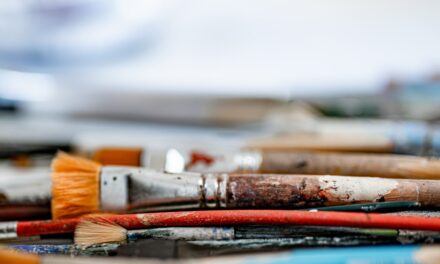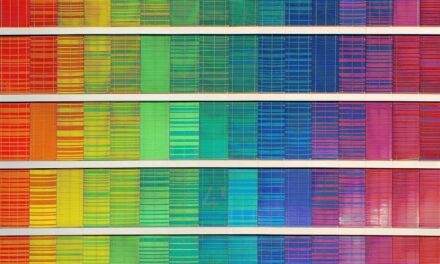Altered books represent a fascinating intersection of literature and visual art, where the pages of a book are transformed into a canvas for creative expression. This practice involves taking existing books—often discarded or unwanted volumes—and reimagining them through various artistic techniques. The result is a unique piece that retains the essence of the original text while simultaneously becoming a new work of art.
Altered books can serve as personal journals, social commentaries, or simply as a means of exploring the boundaries of creativity. They invite artists and writers alike to engage with the written word in a tactile and visually stimulating manner. The allure of altered books lies in their ability to tell multiple stories.
Each page can evoke memories, emotions, and ideas, allowing the artist to weave their narrative into the fabric of the original text. This transformative process not only breathes new life into forgotten books but also challenges conventional notions of authorship and ownership in literature. As artists manipulate text and imagery, they create a dialogue between the old and the new, prompting viewers to reconsider their relationship with both the written word and the physical book itself.
Summary
- Altered books are a form of mixed media artwork created from existing books, using various techniques to transform their appearance and meaning.
- The history of altered books can be traced back to the 1960s and 1970s, when artists began experimenting with altering books as a form of artistic expression.
- Techniques for altered books include collage, painting, cutting, folding, and adding found objects to the pages of the book.
- Materials commonly used for altered books include acrylic paint, glue, scissors, found objects, and decorative papers.
- Altered books can serve as a source of inspiration for artists and writers, sparking creativity and new ideas for their own work.
The History of Altered Books
The practice of altering books is not a modern phenomenon; it has roots that stretch back centuries. Historically, artists have repurposed texts for various reasons, from religious manuscripts adorned with intricate illustrations to personal diaries embellished with drawings and collages. The Dada movement in the early 20th century marked a significant turning point in the evolution of altered books, as artists like Hugo Ball and Tristan Tzara began to embrace the absurdity of everyday objects, including books, as mediums for artistic expression.
This avant-garde approach laid the groundwork for contemporary altered book practices. In the latter half of the 20th century, altered books gained further traction as artists sought to challenge traditional forms of art and literature. The rise of postmodernism encouraged a playful deconstruction of texts, leading to an explosion of creativity in this field.
Artists began to experiment with various techniques, such as cutting, folding, and layering pages, to create dynamic visual narratives. The advent of the internet in the late 20th century also played a crucial role in popularising altered books, as artists shared their work through online platforms, fostering a global community dedicated to this unique art form.
Techniques for Altered Books
The techniques employed in creating altered books are as diverse as the artists themselves. One common method is collage, where images and text from various sources are cut out and rearranged to form new compositions. This technique allows artists to juxtapose disparate elements, creating unexpected connections and meanings.
Another popular approach is painting or drawing directly onto the pages, which can enhance or obscure the original text, adding layers of interpretation. In addition to collage and painting, artists often utilise techniques such as stamping, embossing, and sewing to add texture and dimension to their works. Some may choose to incorporate found objects or mixed media elements, such as fabric or metal, further enriching the visual experience.
The use of pop-ups and interactive elements can also transform an altered book into a three-dimensional experience, inviting viewers to engage with the work on multiple levels. Ultimately, the choice of technique is limited only by the artist’s imagination, making each altered book a unique exploration of form and content.
Materials for Altered Books
The materials used in creating altered books can vary widely, depending on the artist’s vision and available resources. At its core, an altered book begins with a pre-existing volume, which can be anything from an old novel to a discarded textbook. Artists often select books with interesting textures or illustrations that can serve as a foundation for their work.
The choice of book can significantly influence the final outcome, as different genres and formats offer unique opportunities for creativity. In addition to the book itself, artists typically employ a range of supplementary materials. Adhesives such as glue sticks or gel mediums are essential for securing collaged elements, while paints and inks provide colour and depth.
Various types of paper—such as tissue paper, scrapbook paper, or even vintage ephemera—can be used to create layers and visual interest. Tools like scissors, craft knives, and rulers are indispensable for precise cutting and shaping. Furthermore, embellishments such as ribbons, buttons, or beads can add tactile qualities that enhance the overall aesthetic of the piece.
The combination of these materials allows for endless possibilities in the creation of altered books.
Inspiration for Altered Books
Finding inspiration for altered books can be an exhilarating journey that draws from various sources. Many artists find motivation in their personal experiences or emotions, using their altered books as a means of self-expression or reflection. Journaling about significant life events or exploring themes such as love, loss, or identity can provide a rich foundation for artistic exploration.
Additionally, nature often serves as a muse; artists may incorporate botanical illustrations or natural textures into their work to evoke a sense of connection with the world around them. Literature itself is another wellspring of inspiration for altered book artists. Classic texts can be reinterpreted through visual storytelling, allowing artists to engage with beloved narratives in innovative ways.
Quotations or passages from literature can be highlighted or obscured to create new meanings or provoke thought.
By drawing on these diverse sources of inspiration, artists can create works that resonate deeply with both themselves and their audience.
The Impact of Altered Books on Literature and Art
Altered books have made significant contributions to both literature and art by challenging traditional boundaries and encouraging new forms of expression. In literature, they prompt readers to reconsider their relationship with texts; by transforming a book into an artwork, artists invite viewers to engage with literature in a more tactile and interactive manner. This shift encourages a deeper appreciation for the written word while simultaneously questioning notions of authorship and originality.
In the realm of visual art, altered books have opened up new avenues for creativity and experimentation. They blur the lines between different artistic disciplines—combining elements of painting, collage, sculpture, and even performance art—creating hybrid forms that defy categorisation. This interdisciplinary approach has inspired countless artists to explore unconventional methods of storytelling and self-expression.
Moreover, altered books have fostered a sense of community among artists who share techniques and ideas through workshops and online platforms, further enriching the dialogue surrounding this unique art form.
Tips for Creating Altered Books
For those interested in embarking on their own journey into the world of altered books, several tips can help facilitate the creative process. First and foremost, it is essential to choose a book that resonates with you personally; whether it’s an old favourite or an intriguing find at a thrift store, selecting a meaningful text will enhance your connection to the project. Once you have your book, consider brainstorming themes or concepts you wish to explore—this will provide direction as you begin altering pages.
Experimentation is key when creating altered books; don’t be afraid to try new techniques or materials. Allow yourself the freedom to make mistakes—sometimes unexpected outcomes can lead to exciting discoveries! Additionally, keeping a sketchbook or journal alongside your altered book can help you document your thoughts and ideas throughout the process.
Finally, remember that there are no strict rules in this art form; embrace your individuality and let your creativity flow freely.
The Future of Altered Books
As we look towards the future of altered books, it is clear that this art form will continue to evolve alongside advancements in technology and shifts in cultural perspectives. The rise of digital media has prompted some to question the relevance of physical books; however, altered books stand as a testament to the enduring power of tangible objects in an increasingly virtual world. They remind us that there is beauty in imperfection and that creativity can flourish even within constraints.
Moreover, as more artists embrace sustainability by repurposing discarded materials—including old books—altered books may play an essential role in promoting environmental consciousness within the art community. This practice not only breathes new life into forgotten texts but also encourages a dialogue about consumption and waste in our society. Ultimately, altered books will continue to inspire future generations of artists and writers to explore their creativity while celebrating the rich history of literature and art that precedes them.
If you are interested in exploring different art techniques, you may want to read the article An Introduction to the Art Technique: Pouncing Technique. This article delves into the fascinating world of pouncing technique, a method used by artists to transfer designs onto various surfaces. Just like altered books, this technique allows artists to transform ordinary materials into unique works of art. For more insights into the art world, be sure to check out The Artistry Hub.
FAQs
What are altered books?
Altered books are books that have been transformed into works of art through various creative techniques such as painting, collage, and sculpture. Artists use existing books as a starting point to create new and unique pieces of art.
How are altered books created?
Altered books are created by altering the original content and structure of a book using a variety of artistic techniques. This can include cutting, folding, painting, adding or removing pages, and incorporating other materials such as fabric, found objects, and photographs.
What is the history of altered books?
The practice of altering books has roots in the 1960s and 1970s when artists began experimenting with the deconstruction and reconstruction of books as a form of artistic expression. It has since evolved into a popular form of mixed media art.
What materials are used to create altered books?
A wide range of materials can be used to create altered books, including acrylic paints, markers, ink, paper, fabric, found objects, and various adhesives. Artists often use a combination of traditional art supplies and unconventional materials to achieve their desired effects.
What is the purpose of creating altered books?
The purpose of creating altered books is to transform literature into a new form of artistic expression. Artists use altered books as a means of exploring themes, storytelling, and personal narratives, while also repurposing and reimagining existing materials.


